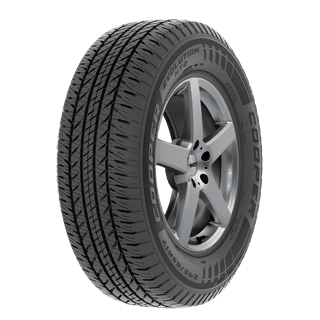Tire Service: The Influence of Climate Condition
When it comes to guaranteeing optimal efficiency and safety on the roadway, recognizing the influence of climate problems on tire solution is essential. In this discussion, we will explore the intricate relationship between weather conditions and tire service, shedding light on the significance of weather-specific tire upkeep techniques and factors to consider.
Warm and Tire Performance
When subjected to high temperatures, tires experience adjustments in performance that can considerably influence automobile safety and handling. The warmth produced from extended driving or hot weather problems triggers the tire rubber to soften, leading to reduced step life and increased wear.
Moreover, high temperature levels can speed up the process of tire aging, triggering the rubber to degrade quicker. This can cause fractures, bulges, and other kinds of damage that endanger the structural honesty of the tire. To mitigate the effects of warm on tire efficiency, chauffeurs need to routinely check their tire stress, revolve tires to guarantee also use, and examine for any kind of signs of damage. In addition, using tires especially created to hold up against heats can aid keep optimum performance and safety and security when traveling.
Winter Effects
Cold weather condition problems can have a significant influence on tire performance and security. As temperatures drop, tire rubber can harden, resulting in reduced traction on icy or snow-covered roads. In chilly climate, tires might also lose atmospheric pressure more rapidly, which can affect handling and gas performance. In addition, cool temperature levels can trigger tire sidewalls to stiffen, enhancing the danger of damages from pits or other roadway threats.
To minimize the results of cold weather on tires, it is essential to routinely examine tire stress and inflate them to the maker's advised levels. Using winter months or all-season tires created for winter problems can additionally improve grip and hold on icy or snowy roads - tire shop morris. Correct tire maintenance, consisting of regular assessments for wear and damages, becomes also extra vital throughout chillier months to ensure ideal performance and security
Rainy Issues Effect
During rainy conditions, tire performance and safety can be considerably influenced by the wet road surfaces and reduced visibility. The step pattern of tires plays an essential role in maintaining grip on damp roadways. Tires with damaged footsteps are extra vulnerable to hydroplaning, where a layer of water constructs up in between the road and the tire surface, bring about loss of grip. To fight this, motorists must consistently evaluate their tires for appropriate tread depth and take into consideration purchasing tires especially developed for wet problems.

Snow and Tire Safety
When driving in snowy problems, having the appropriate tires can make a considerable distinction in safety and security and efficiency. Winter tires are developed with special rubber compounds and walk patterns to supply far better grip on snow and ice contrasted to all-season tires.
Along with utilizing winter months tires, it is essential to ensure they are correctly pumped up. Winter can cause tire pressure to drop, affecting grip and handling (tire shop morris). On a regular basis examining and keeping the proper tire stress is crucial for ideal efficiency in snowy conditions

Weather-Related Tire Upkeep
When confronted with different weather conditions, correct tire maintenance ends up being an essential element of vehicle safety and security and performance. Weather-related tire upkeep incorporates an array of practices aimed at ensuring ideal tire feature and longevity in different climate situations. One key aspect of weather-related tire upkeep is tire stress regulation. Rising and fall temperature levels can cause tire pressure to vary, influencing grip and fuel effectiveness. Regularly inspecting and readjusting tire stress according to manufacturer suggestions is vital for secure driving in changing weather. In addition, tire tread depth plays a considerable function in taking care of different weather condition aspects. Tires with appropriate step deepness give far better grip on wet or icy roadways, decreasing the threat of hydroplaning or skidding. Evaluating tire step routinely and replacing tires when walk wear reaches a specific depth is important for maintaining traction and security in negative weather condition. By focusing on weather-related tire upkeep, motorists can improve safety and security, boost automobile performance, and prolong the life-span of their tires.
Conclusion
Finally, climate my explanation condition have a substantial influence on tire efficiency and safety. From heat influencing tire pressure and wear to winter decreasing grip, it is important to consider the climate when keeping and using tires. Wet problems can decrease grasp and lead to hydroplaning, while snow can enhance the threat of mishaps if tires are not effectively geared up. Weather-related tire upkeep is crucial in making certain ideal efficiency and safety when driving.
In this discussion, we will check out the complex relationship between weather problems and tire service, dropping light on the value of weather-specific tire upkeep techniques and factors to consider.

Comments on “Dependable Tire Shop Morris: Your Location for Quality Tires and Solutions”